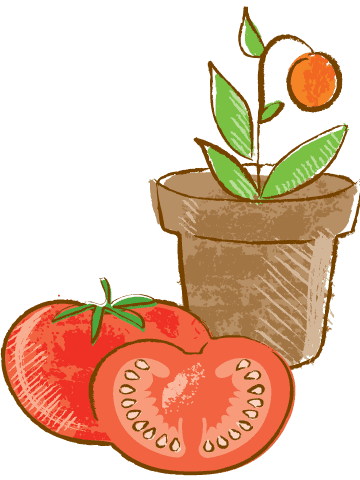The Children’s Peaceful Garden (CPG) at Kitchawan Farm in Ossining, New York, is quite literally a model garden. After the first one was created in 2000, it became a template for other play spaces around the world and was chosen in 2016 by the Jane Goodall Institute and the United Nations as an example of peace and sustainability.
“What we are doing is so easily replicated,” explains Barbara Sarbin, educational program director for Something Good in the World (SGITW), the nonprofit that operates the garden. “It’s not just a playground, not just a garden, not just a farm. It serves multiple purposes. It’s a play space within the context of a garden. And each smaller garden within is a teaching garden.”
While the CPG is packed with loads of features, the intent is to inspire and encourage others to replicate any of its parts. Versions have been created in seven locations reaching as far from home as Hawaii.
The original design includes many small teaching gardens: pollinator, wild edibles, sensory, woodland, wetland, native trees, and strawberries. It also has sitting areas, activity stations, birdfeeders, a bee sanctuary, a chicken coop with a green roof, an Envira Pod shelter (indoor year-round solar-powered classroom), rain barrels, drip irrigation, a pop-up greenhouse for growing annual vegetables from seed, and more. At the center of it all is a wetland pond.
Every week, various student groups visit the CPG at Kitchawan Farm, including schools, day care centers, shelters and homeschool groups that incorporate health and wellness into their curricula. Some visit regularly and help with ongoing maintenance, while others visit occasionally for specific activities.
The children maintain the gardens with teachers, interns and volunteers. First and foremost, we want to promote sustainability, but second we want to promote peaceful play.
Individual gardens and projects found in the CPG can be scaled for any size space, and Barbara generally encourages schools to think small when expanding their garden programs to avoid getting overwhelmed.
“Make it small and manageable. Scale it to your space. Have a long-term vision,” Barbara says. “It might take seven years to create it fully. At first it might not look like much, but it’s ok if other people don’t get what you’re doing at first. They will eventually. Don’t try to do it all at once. The variables are too many and uncontrollable.”
Barbara suggests adding one new element per year to the garden, such as:
- A little green roof: A green roof doesn’t have to be on top of a large building. At the CPG, the chicken coop has one. It can also be installed atop a tool shed, storage building, dog house, or any outdoor structure. Plant what will thrive in the location. “Most green roofs are made with sun-loving succulents, but we actually found from our research that for our climate succulents were not going to insulate as well. And we wanted that because it’s the chicken coop so it needs to be warmer in the winter and cooler in the summer. So we decided to use perennial native shade-loving plants instead.”
- Chickens: Beyond eggs, chickens also provide plenty of good stuff for the garden: they till the soil, eat ticks, slugs and other pests, fertilize the grass (if allowed to free range), and produce manure for compost. “And children love them. Ask any child what they like best about the Children’s Peaceful Garden, they will probably say the chickens.” To get started, Barbara recommends reading backyard chicken websites and starting with a minimum of four adult chickens.
- An alternative energy project: “Renewables are easy. It’s not science fiction and it’s not futuristic. Add solar power to your garden, even if just for demonstration.” Consider any of the following features that showcase alternative energy at the CPG: a solar-powered fountain, low wind generator, a see-saw that pumps water, and a bicycle kids can pedal to make a smoothie.
Barbara’s other top recommendation for any school garden is to prioritize pollinators. “We need to educate people about bees,” she says. “There are all kinds of lessons in it.”
She encourages schools to consider adding beehives. To get started, Barbara recommends partnering with an experienced local beekeeper, which also is a requirement for the Whole Kids Foundation Bee Grant Program, available every year on September 1.
With or without beehives, schools can do plenty to support the bee population and educate kids all about pollinators. Research online and find out what to plant in your area during each season of the year to attract more pollinators. Bees need variety and will travel long distances to forage, so add these plants in other surrounding areas in the community around your garden. Also make sure there is a clean water source — even simple, small water catchment ponds are adequate to satisfy thirsty bees.
Barbara also recommends that anyone with a garden sign up for the Jane Goodall Roots & Shoots program. Membership is free and they provide information and support for individuals and groups.



